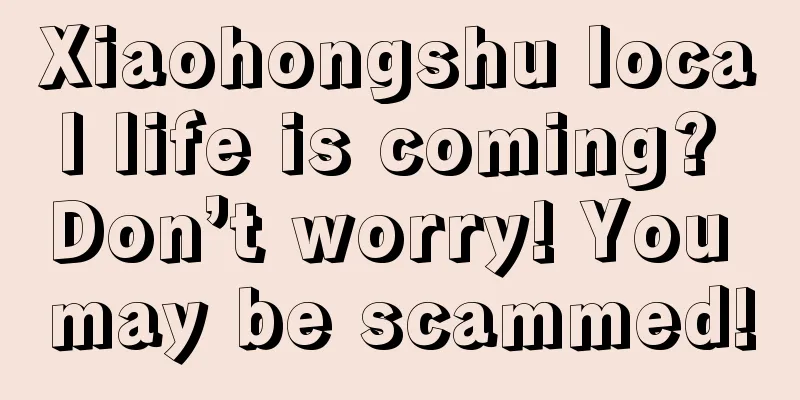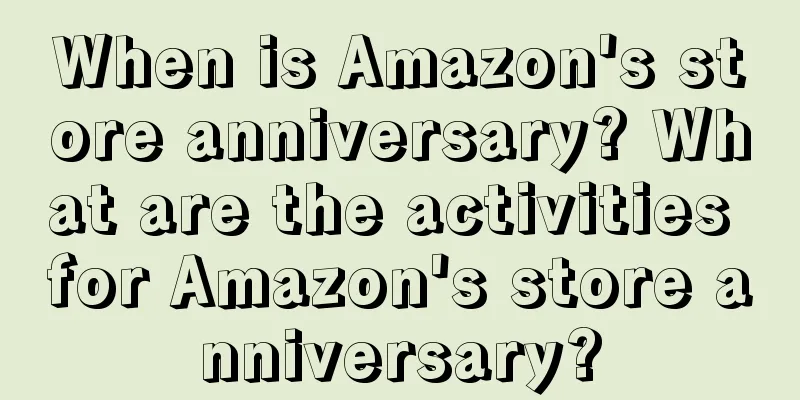Thinking about making the brand bigger

From 2012 to 2022, the popularization and application of mobile Internet and machine algorithms has given rise to the rise of numerous information platforms: Douyin, Kuaishou, Xiaohongshu, Bilibili, etc. The rise of these information platforms has promoted the development and evolution of circle business. The business world has entered an era of niche entry and strong growth beyond the circle from the era of mass brands. In recent years, supernova brands such as Yuanqi Forest, Wang Baobao, Santonban, and Zhongxuegao have seized the opportunity of consumers' increasingly personalized and segmented needs, and quickly rose through the loyalty of segmented people. The giants are also expanding their product lines and actively incubating segmented brands to drive business growth under the new thinking of creating segmented brands. For example, Procter & Gamble has Metamucil, a segmented brand that specializes in weight loss meal replacement products. In the past 10 years, many new brands have been facing a problem after they came to the market: Why can't they grow bigger? For example, why can "Muwu BBQ" open thousands of stores across the country, while many barbecue restaurants can never open in the back streets? Why can "Hua Xizi" rise so quickly, while some brands' products are still piled up in the hands of distributors? To become a small brand may only require an opportunity and a little ingenuity, but if you want to become a big brand, you also need various knowledge such as management, marketing, technology, capital, and more soul-searching. So, why can't your brand grow bigger? 1. Core reasonsThe core reason why "brands have never grown big" is that companies do not use "new cost thinking" to manage brands. What is "new cost thinking"? It means that not only money is considered cost, but also your time, energy, innovation, management, etc. are all costs. Let's take a closer look at this issue. "Not being able to grow big" means that something is limiting your development. There are at least three reasons that can limit the development of a brand: market form, competitive relationship, and self-operation. These three factors will generate corresponding operating "costs", and each cost will restrict the company's sustainable development: market form = opportunity cost, competitive relationship = competitive cost, and self-operation = replication cost. 2. Market CapacityMany people have heard of the term "market capacity". The size of your market capacity will determine your market size. For example, if you are a foreign beverage brand and you position your core market in China, you will have a market of several hundred million people. But if you position your market in Sweden, your maximum market size will be 10.18 million people. However, "market capacity" is only a basic factor and cannot be used as the only criterion for measurement. "Market capacity" is only one of the dimensions. Let's add five more dimensions to examine your market. 1. Product ProblemMarket size: Is the market a hundred billion level market or a billion level market? Is there any demand that is not fully met? 2. Speed IssuesMarket growth rate: Is your current market close to saturation? Or is it still growing steadily? Is the growth rate 3% or 30%? For example, China's first- and second-tier markets are saturated for most brands, while third- and fourth-tier markets are still profitable. Another example is that China's pet economy and silver-haired economy will have strong growth in the future, but the kitchen appliance industry and mobile phone industry have been saturated in the past two years. 3. DurationWhether it is a rigid demand or not, "rigid demand" refers to whether we always need a certain product and whether it will become outdated easily. For example, in the field of consumer goods, milk is a rigid demand consumer product, while a certain flavor of beverage may become outdated after a few years; in the field of Internet applications, instant messaging software such as WeChat is a rigid demand, but expert question-and-answer software such as Xing is not a rigid demand. 4. Frequency IssuesHigh frequency or not, "high frequency" refers to whether we consume products frequently enough. For example, facial tissue is a high frequency consumption product, but the wedding photography industry is a typical low frequency consumption product, and a normal person will only get married 1-2 times in his life; distribution problem: market concentration, "concentration" means whether this industry is controlled by a few giants or divided up by a group of "ants"? For example, China's dairy industry is controlled by giants such as Yili and Mengniu, and the industry concentration is high. However, the catering industry is affected by its geographical location, which is a typical industry with low concentration, and it is impossible for it to be divided up by a few big brands. 5. User stickiness issueThe aggregation effect of users. The market where your brand is located should be active, and users should stick together, so it is easy to aggregate users together. 3. Competitive Relationship and Own OperationWhen we find that a brand has not been able to grow, the first step is to do a self-examination of the market situation to see what is happening in the market we are in. For example, if you find that the market associated with your product is close to saturation, you may need to open up a new category market to obtain greater benefits at a lower opportunity cost. The market itself is only an objective constraint. If a brand has not been able to grow, most of the reasons are still due to competition and its own operations. "If a company can grow big, it must have eliminated competition to some extent." This sentence tells us how to correctly view competition, that is, competition is not about two people chasing each other in a race, but about trying not to compete with your opponent on the same track. All the brands that have grown big in recent years have met this basic competition logic. Let's take Luckin Coffee, which is the most familiar to everyone, as an example. Luckin Coffee went public in 18 months and eroded the market share of the giant Starbucks in China. Although both Luckin Coffee and Starbucks sell coffee, their business models are completely different. What is the biggest difference? Luckin Coffee's customer acquisition method is completely different from Starbucks. The customer acquisition scenario of traditional coffee shops is offline. They open stores in places with suitable traffic and consumer groups through reasonable site selection, thereby converting coffee people within a few kilometers around the store into consumers. For example, they generally like to choose shopping malls, office buildings, and office areas like SOHO to open stores. Affected by multiple factors such as financial fraud, delisting, and the re-emergence of the epidemic in 2022, Luckin Coffee still survived and regained profitability, which is enough to show the strength of Luckin Coffee's brand operation capabilities. 4. ProductsThe best competition is to eliminate competition from the product level. If you develop a product that many people need and other competitors do not have, this is the best business. Unfortunately, there are very few such products, and they generally only exist in some high-tech companies. The most common practice in the industry is brand positioning, and the most common positioning method in brand positioning is "category innovation", which is to make a slight adjustment to the original product, add or upgrade certain elements, so that this product becomes a new product that no one has ever seen. 5. ChannelsHow much does it cost to build your business? The so-called channel refers to who sells the product and where it is sold. Because China is so vast, for many years, the scope of the channel distribution is often equivalent to the sales volume of the product. If the product is the emperor, then the channel is the product's "kingdom". Wahaha, Nongfu Spring, Jiaduobao in the beverage industry, Dali in the food industry, Niulanshan in the liquor industry, Yili Mengniu in the dairy industry... There are many Chinese companies that are famous for their strong channel power. Or it can be said that the biggest factor in their growth may not be brand, but channel power. Back then, Wahaha Group could launch a new product this month, and the next month this product would appear on the shelves of major supermarkets, mom-and-pop stores, and even newsstands across the country. Therefore, among the four factors of marketing, the moat of channels is the highest. As a new product, the cost of competing with giants in this field is the most expensive. What you pay may not be a price, but a price of life and death. We can see that many new brands have emerged in recent years. Their success is largely due to bypassing the channel war and reducing the cost of building a kingdom to the lowest. 6. PricePricing is not about profits, but about competitive costs. Many people think that pricing is about finding a number that consumers can accept and that can earn the most money. This understanding is too superficial. In fact, pricing is the ultimate embodiment of your company's marketing model. Is a low price set just because you want to "make small profits but quick turnover"? More than that. When Procter & Gamble and Unilever entered China, their shampoo brands such as Rejoice and Pantene were set at super low prices. When Chinese consumers saw that foreign brands endorsed by celebrities were cheaper than domestic brands, they naturally chose foreign brands. Today, the market for domestic shampoo brands has been suppressed by Procter & Gamble and Unilever and is shrinking. This pricing strategy is to first occupy the market with low prices to form a monopoly effect, and then find ways to raise prices to harvest the market, or develop other high-profit brands to harvest the market. Is the "competitive cost" brought by this pricing strategy high or low? Why do Jiaduobao and Red Bull define high prices for beverages, which are also fast-moving consumer goods? High prices can bring more profits and high prices can also target high-spending groups, but the meaning of high prices is more than that. The high profits brought by such high prices can support their huge advertising investment every year. They can suppress other competitors with overwhelming advertising. Even if competitors have price advantages in the market, they will always be weaker than them in brand power. Therefore, such high prices also lower the "competitive cost". In marketing, the price will directly affect the final sales volume of the product, but the price is not the lower the better. The pricing also depends on the specific consumers, the category they are in, etc. How to fight a price war is an enduring topic in the competition between enterprises and competitors. Moreover, price war must be fought, but it needs to be fought skillfully. Apple also fights price wars, but its price war is fought skillfully. Anyone who does not fight price war skillfully will end up like " Luo Yonghao" . When Luo Yonghao T1 was launched, he insisted on pricing his mobile phone at 3,000 yuan, and criticized that 1,999 yuan was a monkey trick. In the end, he had to face the cruel reality, reduce the price, and set the price according to the principles of psychology. Pricing is not simply cost plus profit, but requires product category positioning and product positioning first, and then pricing based on the different values generated by the product category. For example, if a new beverage costs 6 yuan and the company wants to make a profit of 4 yuan, then pricing it at 10 yuan seems to be a reasonable choice, but it is not the case from the consumer's perspective. This highlights the importance of positioning. When this beverage is positioned in a high price range, the manufacturer will gain more profits. For example, if the same beverage is placed on the shelf of a supermarket and compared with a bottle of cola that costs 3 yuan, then it is difficult for the price of 8 yuan to have an advantage; but if it is placed in a coffee shop, compared with a cup of coffee that costs 30 yuan, it may be priced at 15 yuan, which seems very cheap. This is why Yuanqi Forest must first make sugar-free beverages to succeed. Because it is a sugar-free beverage, it can be sold at 5 yuan per bottle at the terminal. If it is also a sugary soda, it is very difficult to sell it at 5 yuan per bottle. The reason for the above situation is that consumers do not know how much a newly launched product is worth. The only way they think the price of this product is high or low is by comparing it with previous products. If a piece of fried chicken is sold at 5 yuan in a street shop, you will think it is expensive, but if it is sold in McDonald's, you will think it is so cheap. Therefore, when mature brand companies price new products, they must first position the product, or carry out category innovation, and then find products that match it, and then seize the consumer market through price advantages or other marketing activities in the same range. The method to find an anchor product for yourself is: first, you need 1; second, think about which competing products can meet these needs. Let's take the beverage mentioned above as an example. If this beverage can satisfy consumers' needs for refreshment, what products on the market have the same needs? We may drink tea to refresh ourselves, or we may choose coffee, or functional drinks like Red Bull, which will all become competitors of this new beverage. After finding the approximate range of competing products, the brand had a basic direction for pricing. Finally, after considering the portability and taste of the beverage, the brand priced the beverage at 8 yuan and placed it next to the 12 yuan canned coffee on the shelf, so that consumers would try the newly launched beverage. This price is actually higher than what they originally expected. After a period of sweetness for new products, they can make fine adjustments to the price. Sales continue to grow steadily, and word of mouth and volume are also well promoted. Generally, brands raise prices every year. The reasons for the price increase include raw material and labor costs, but the more important reason is that consumers hope that the products they buy are valuable. 7. PromotionTraffic costs are not the lower the better. When we develop good products, have sales channels, and set a good price, we will immediately encounter traffic wars. No matter what type of brand you are, you must use traffic to acquire customers, occupy consumers' minds, and consolidate your brand positioning. The trouble is that good traffic is very expensive. Which brand doesn't want to sponsor CCTV's Spring Festival Gala? But do you have hundreds of millions of advertising fees? Why did many APP brands start to do offline promotion in the past few years? Because they found that offline head-to-head promotion is cheaper than purchasing online traffic; the current hot private domain traffic is to use the Internet infrastructure such as WeChat communities to reach as many users as possible and retain users so that the business can last for a long time. 8. Self-operationHave you ever considered the "replication cost" of your company? From the perspective of business operations, if your development has encountered a bottleneck, it is likely that your past business model is no longer effective. In other words, past success cannot be "replicated". There are many such examples, such as Lechun yogurt. Le Chun is a typical "user"-oriented company. Its organizational structure is designed around user operations and experience. For example, employees conduct user interviews every week to collect product suggestions, which are then passed on to the back-end product development department. For example, Le Chun's durian-flavored yogurt was called for by Le Chun's fans. In the early days, Le Chun mainly relied on content marketing on platforms such as WeChat and Weibo. Through some interactive story marketing and public recipe production, it gained a group of loyal yogurt fans. Focusing on users rather than competitors, focusing on product experience, community operation... It can be said that Le Chun is full of all the labels of "future marketing model". With these ideas and methods, Le Chun has become a very successful small brand. But when it is not satisfied with its own weakness and wants to enter the mass market, problems arise. Without its own production line, the production capacity is insufficient. In order to expand sales, Le Chun expanded its distribution range from within the Third Ring Road of Beijing to the whole country; but the nationwide distribution of low-temperature stored yogurt brought about the second problem of "cold chain logistics", so Le Chun spent most of its financing to build a cold chain system; because the cold chain system consumed a huge amount of money, Le Chun was unable to invest more in offline channel operating expenses and marketing expenses, and offline supermarkets, convenience stores, and Tmall and JD.com all require manpower and financial investment. It can be said that Le Chun's early competitiveness was due to the fact that it captured a large number of fans at a very low cost, but this successful model cannot be completely replicated in the future Le Chun, making Le Chun a big brand. The "replication cost" I am talking about is the "standardization" and "scale" of the business model. A business that cannot "standardize" will not have "scale", and a business without "scale" will always be a small business. Why can't your brand grow? There may be many answers, but no matter what your answer is, companies can use "new cost thinking" to think about your answer again. Is your market opportunity cost too high? Is your competition cost too high? Is your company's replicable cost low enough? In movies and TV shows, business heroes are often portrayed as adventurers who dare to take big bets. But in the real world, business heroes have always been conservatives who always keep "cost" in mind. Author: Liu Yichun Source: WeChat public account "Liu Yichun's Brand Business Innovation (ID: shangyeyiguohui)" |
<<: Detailed! 7 Types of Data Analysis Report Writing Guides
>>: Three pictures to explain content marketing in the World Cup
Recommend
McMahon walkie-talkies are a blast. Why do McDonald’s toys always appeal to consumers?
This article deeply analyzes how McDonald's su...
What are Amazon's operational tools? Which ones are useful?
Everyone should be familiar with Amazon. Now, merc...
The crisis caused by a box of mooncakes, is the end of “influencer sales” coming?
In the live-streaming e-commerce boom, the sales a...
The reasons behind the explosion of "Black Myth: Wukong": Five points worth learning from brand marketing
As a domestic 3A game masterpiece, Black Myth: Wuk...
This is too much! Sales analysis can be done so well?
In the world of data analysis, sales analysis is o...
How to open an overseas payment account? Where to open one?
To do cross-border business, you need to register ...
Are the products sold by Amazon overseas genuine?
There is a type of store on the Amazon platform ca...
How to write an Amazon product description? How to write a product description?
Amazon merchants need to prepare product pictures ...
After working as a food delivery agent on JD.com for half a month, Meituan’s orders exploded
It has been two weeks since JD Takeout was launche...
The founder of Zhong Xue Gao sells sweet potatoes and "pays back every penny"
Lin Sheng, the founder of Zhong Xue Gao, started l...
From entry to breakthrough: How can businesses tap into new growth in video accounts?
Video accounts have now become an indispensable ch...
More than 300 brands have joined the market, and short drama marketing is still popular
From Hansu's "saturation attack" to ...
Super detailed real-life examples of user portraits
In today's data-driven business environment, u...
eBay Germany Buyer Protection Policy Update
eBay Germany announced that from December 12, 2023...
How to get an Amazon bank statement? Where to get it?
If Amazon merchants need to verify their bank acco...









